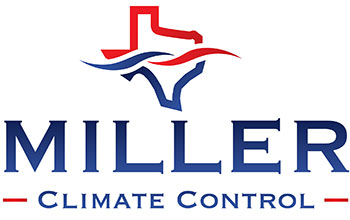
You might not think often about how your air conditioner works, but it depends on refrigerant to keep your home fresh. This refrigerant is controlled by environmental regulation, since it contains chemicals.
Depending on when your air conditioner was installed, it may use R-22, R-410A or R-32 refrigerant. We’ll discuss the differences and which air conditioner refrigerants are being phased out in Georgetown, as well as how these phaseouts affect you.
What’s R-22 and Why Is It Phased Out?
If your air conditioner was put in before 2010, it likely uses Freon®. You can discover if your air conditioner contains it by contacting us at 512-379-6873. You can also look at the name plate on your air conditioner condenser, which is found outside your residence. This sticker will contain information on what type of refrigerant your AC uses.
Freon, which is also called R-22, contains chlorine. Scientists consider R-22 to be bad for the earth’s ozone layer and one that leads to global warming. The Environmental Protection Agency, which manages refrigerants in the United States, outlawed its creation and import in January 2020.
Should I Replace My R-22 Air Conditioner?
It varies. If your air conditioning is cooling properly, you can continue to keep it. With yearly air conditioner maintenance, you can expect your system to run around 15–20 years. However, the Department of Energy reports that removing a 10-year-old air conditioner could save you 20–40% on yearly cooling costs!
If you don’t replace your air conditioner, it can cause difficulties if you need air conditioning repair down the road, specifically for refrigerant. Repairs may be pricier, since only small quantities of recycled and reclaimed R-22 is accessible.
With the end of R-22, a lot of new air conditioners now use Puron®. Also called R-410A, this refrigerant was created to keep the ozone layer strong. As it requires an incompatible pressure level, it doesn’t match air conditioners that use R-22 for cooling.
However, Puron still has the likelihood to create global warming. As a result, it might also eventually be discontinued. Although it hasn’t been disclosed yet for residential air conditioners, it’s expected sometime this decade.
What Refrigerant Will Take Over R-410A?
In preparation of the end, some manufacturers have initiated using R-32 in new air conditioners. This refrigerant is classified low for global warming possibility—around one-third less than R-410A. And it also lowers energy use by about 10%, according to the Intergovernmental Panel on Climate Change’s Fourth Assessment Report. That’s savings that could be sent on to you through your energy expenses.
Miller Climate Control LLC Can Help with All Your Air Conditioning Needs
In short, the modifications to air conditioner refrigerant probably won’t concern you greatly until you have to have repairs. But as we went over previously, repairs connected to refrigerant can be more expensive because of the reduced quantities that are accessible.
Aside from that, your air conditioner frequently malfunctions at the worst time, often on the muggiest day when we’re receiving lots of other requests for AC repair.
If your air conditioner uses a phased out refrigerant or is more than 15 years old, we recommend getting a modern, energy-efficient air conditioner. This provides a trouble-free summer and might even decrease your cooling bills, especially if you get an ENERGY STAR®-rated system. Plus, Miller Climate Control LLC offers many financing programs to make your new air conditioner fit your budget. Contact us at 512-379-6873 to begin right away with a free estimate.

